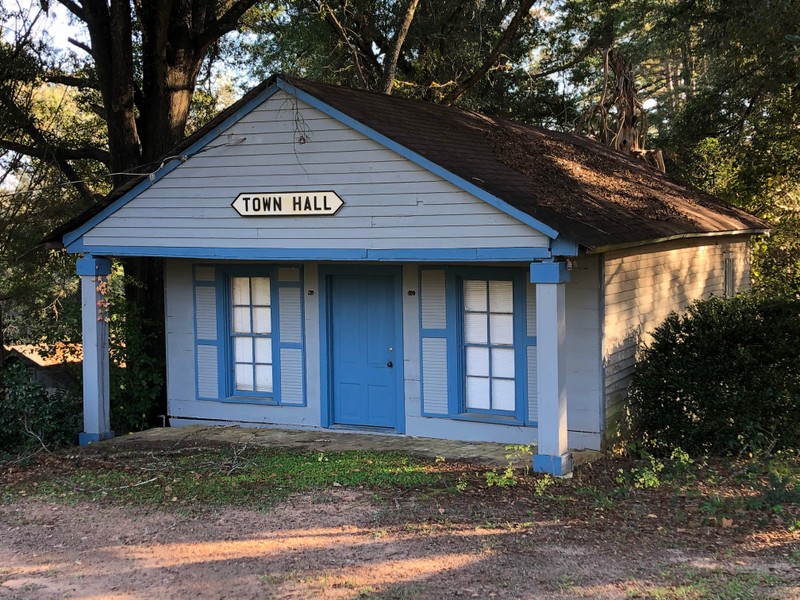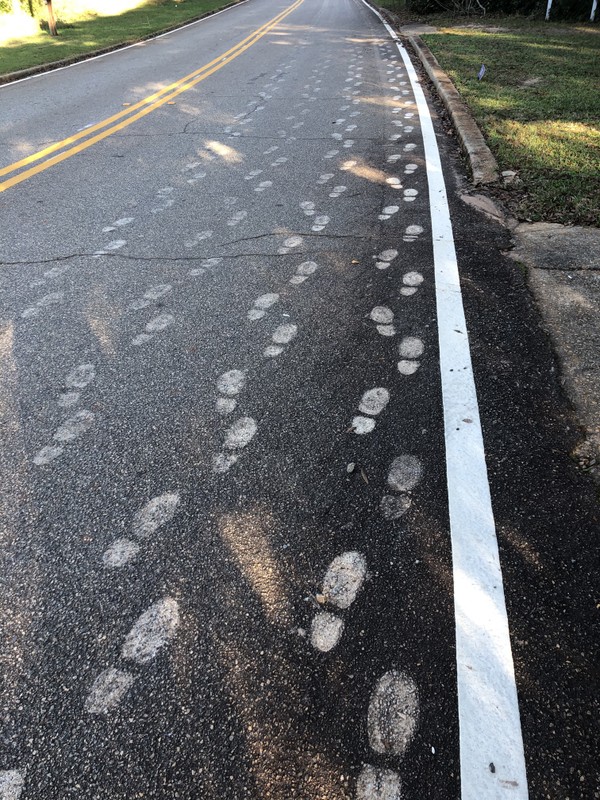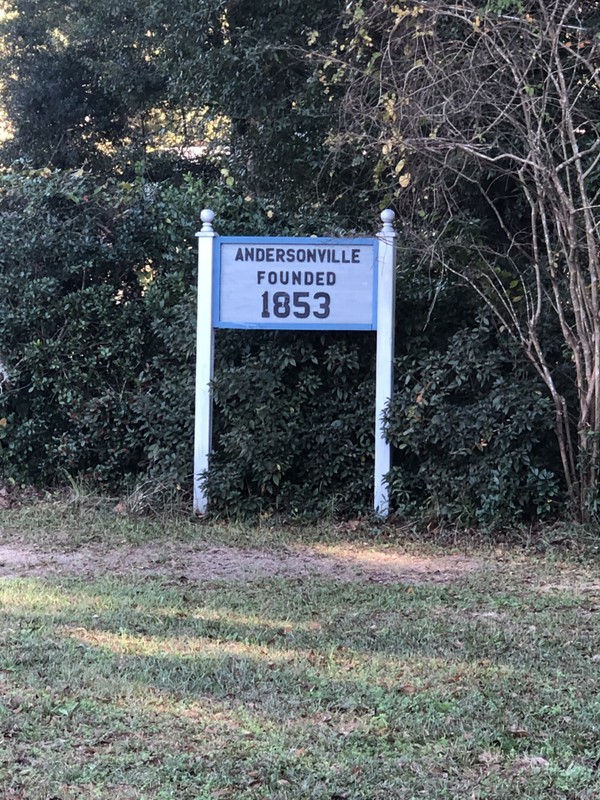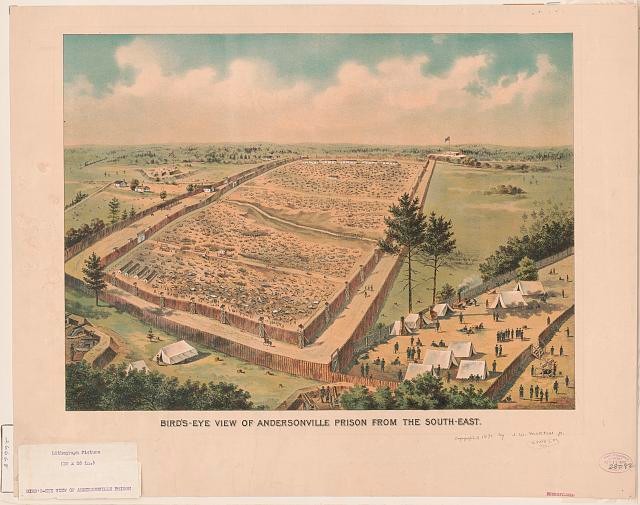Prisoners' path
Introduction
Text-to-speech Audio
Images
Andersonville Town Hall, est. 1853

Painted footsteps to mark the path of Union soldiers captured by the Confederate States.

Andersonville town marker

Bird's-eye view of Andersonville from the Southeast

Backstory and Context
Text-to-speech Audio
Union soldiers captured by the Confederacy traveled by rail to the prison site. Andersonville was chosen as the location for the prison camp because of the village’s relative anonymity. Andersonville was remote and the townspeople did not object politically to the presence of the prison and of Union prisoners.[1] The remote location also prevented the supply of adequate resources for both prisoners and garrison. Thousands of soldiers who arrived at Camp Sumter experienced hunger and starvation due to lack of resources arriving on that very same railroad line.[2]
The journey was long and tiring as Union prisoners made their way to Andersonville from across the South. Moving on “flat-cars,” soldiers packed into trains that held 1800 men, all traveling to a prison that was rapidly overfilling its capacity.[3] As captured soldiers pulled into the train station, they saw only a small town with a few distinct characteristics. One Union prisoner recalled:
“When we got within a short distance of that place, we smelt something rather strong. I asked one of the guards what it was. He said, “You will soon find out what it is,” and you bet we did.”[4]
After marching from the railroad station to the camp, prisoners arrived at the North Gate. Many felt despair upon viewing the gates of Camp Sumter, perhaps lamenting their predicament as did Union prisoner William Tyler, who wrote:
“I little thought that I would get out of Andersonville alive; and oh! How many that marched through the prison gates that day came out on the dead-cart!”[5]
Sources
[1] Robert S. Davis, “Escape from Andersonville: A Study in Isolation and Imprisonment,” The Journal of Military History 67, no. 4 (October 2003): 1066.
[2] Robert S. Davis, “Escape From Andersonville: A Study in Isolation and Imprisonment,” The Journal of Military History 67, no. 4 (October 2003): 1066.
[3] William N. Tyler, “The Dispatch Carrier and Memoirs of Andersonville Prison,” (Port Byron, Ill.: Port Byron “Globe” Print., 1892), 10-11, Retrieved from Project Gutenberg, ed. June 10, 2012. Accessed December 11, 2020.
[4] William N. Tyler, “The Dispatch Carrier and Memoirs of Andersonville Prison,” 11-12.
[5] William N. Tyler, “The Dispatch Carrier and Memoirs of Andersonville Prison, “ 11.
Personal Photograph, Erin Del Giudice, November 14, 2020
Personal Photograph, Erin Del Giudice, November 14, 2020.
Personal Photograph, Erin Del Giudice, November 14, 2020
Library of Congress Prints and Photographs Division Washington, D.C. 20540 USA
